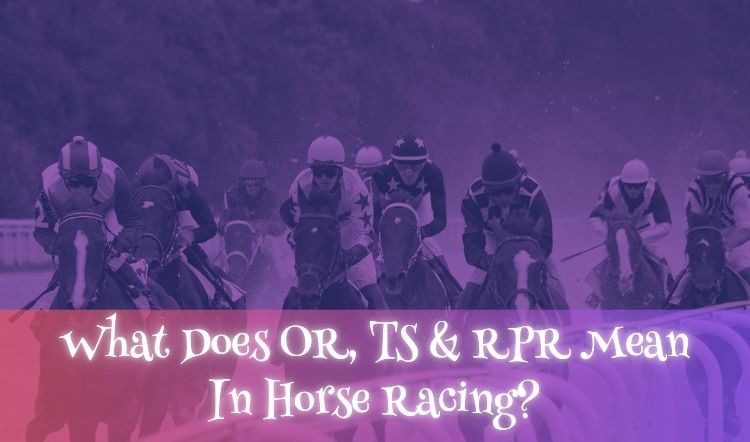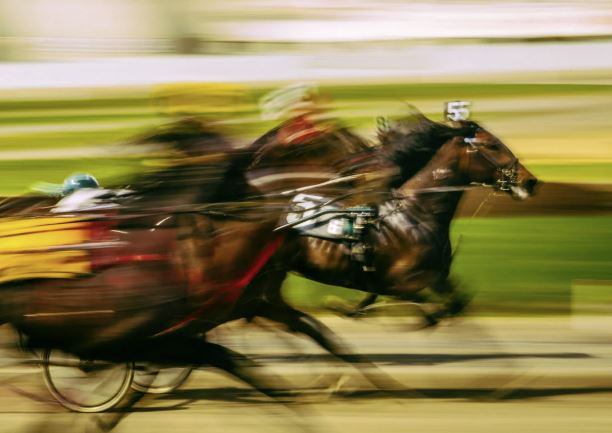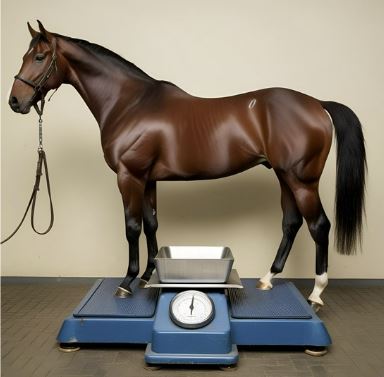
Horse racing is a popular sport driven by numbers and ratings that help assess a horse’s potential. Among the key metrics used to evaluate a horse’s quality and performance are OR, TS, and RPR. These terms are commonly seen in the industry and play an important role in understanding how a horse might perform in a race, but what exactly do they mean?
In this post, we’ll break down what these terms mean and explain how they are used to give a clearer picture of a horse’s abilities. Read on to learn more.
OR Horse Racing Meaning
In horse racing, the term "OR" stands for "Official Rating," which is assigned by the British Horseracing Authority (BHA). This rating helps determine the weight a horse will carry in handicap races.
The OR serves as an indicator of a horse's overall ability, with higher ratings suggesting stronger horses. It's based on the horse's past performances, and horses with higher OR ratings typically carry more weight in races.
While the OR is an important metric, it’s just one aspect of evaluating a horse's chances. To get a complete picture, bettors may also want to consider other factors, such as the horse’s recent form, its suitability for the course and distance, and the strength of the competition.
What Does TS Mean In Horse Racing?
In horse racing, "TS" stands for "Top Speed," which is a rating that measures a horse's fastest recorded speed. This figure, often provided by sources like the Racing Post, takes into account factors such as the race distance and the weight the horse carried. The TS is useful for comparing the raw speed of different horses across races, offering insights into their speed potential.
The TS rating is calculated by comparing the time it took a horse to complete a race to the standard time for that particular course and distance. Adjustments are then made based on factors like the race conditions (known as the "going"), the weight the horse carried, and the nature of the race.
While a high TS rating suggests a horse has strong speed potential, it’s important to remember that speed alone isn’t enough to win a race. Other factors, such as stamina, race tactics, and how well a horse adapts to different conditions, also play significant roles in determining the outcome.
Racing Post Rating System Explained
The Racing Post Rating (RPR) is an important tool in evaluating a horse’s performance in relation to its weight during a race. Computed by the Racing Post, a leading British publisher in horse racing and sports betting, the RPR is designed to provide a snapshot of a horse’s ability based on its recent performances.
The RPR is expressed in pounds (lb), with higher ratings suggesting superior performance. For example, a horse with an RPR of 140 is considered 10lb better than one with an RPR of 130.
This rating is updated after every race, reflecting a horse’s latest form. While a strong RPR can be a good indicator of potential, it’s essential to consider other factors, such as the horse’s overall form, race conditions, and the competition, when assessing its chances in an upcoming race.
What’s The Difference Between OR and RPR? 
Both the OR and RPR are measures of a horse's ability, but they are calculated in different ways and serve slightly different purposes.
The OR, assigned by the BHA, is primarily used to determine the weight horses must carry in handicap races. It’s based on a horse's past performances, providing a stable measure of its overall ability. Because of this, the OR tends to remain relatively consistent over time.
On the other hand, the RPR is calculated by a private handicapper at the Racing Post and reflects a horse's recent performances, adjusting for the weight it carried in its last race. This means the RPR is more dynamic and may fluctuate depending on a horse’s current form, making it a more up-to-date indicator of ability.
In summary, while both ratings provide valuable insights, they are calculated differently and serve distinct purposes. To make informed betting decisions, it’s important to consider both the OR and RPR, along with other factors such as the horse’s form, race conditions, and the competition.
As always, please gamble responsibly.
*The information provided in this blog is intended for educational purposes and should not be construed as betting advice or a guarantee of success. Always gamble responsibly.
